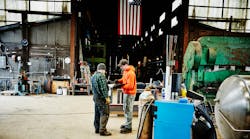Two recent reports from the Bureau of Labor Statistics show that manufacturing is not fully feeling the benefits of a growing economy. Even as overall employment and productivity indexes maintain steady growth, manufacturing employment stays roughly flat while productivity falls.
Nonfarm payroll employment rose by 225,000 in January 2020. That’s better than the average gain of 175,000 jobs per month in 2019. In the same period, though, manufacturing payroll employment lost about 12,000 jobs. Notably, 11,000 of the jobs lost in manufacturing were in motor vehicles and parts. The overall unemployment rate was stable at 3.6%.
In productivity, overall nonfarm productivity rose 1.4% in the final quarter of 2019 and 1.7% over the whole year. The annual rate of productivity growth last year was the highest it’s been since 2010, when it grew 3.4%. The Bureau of Labor Statistics’ index for manufacturing productivity, which it cautions is “not directly comparable” to their measure of nonfarm productivity, fell 1.2% as output fell 1% and hours worked rose 0.2%.
Durable manufacturing labor productivity fell 0.8% as hours worked and output fell 0.8% and 1.6%, respectively. Non-durable manufacturing labor productivity fell 2.2% as output fell 0.4% despite hours worked increasing 1.9%. The unit labor cost, or the amount a business pays per unit of output, rose 5.9% for the manufacturing sector in the last quarter of 2019. Unit labor costs in manufacturing have risen for six quarters in a row now.




